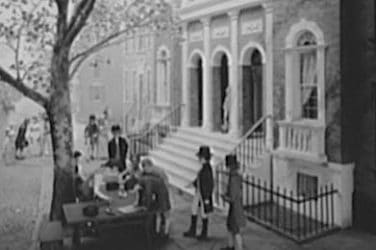It’s no secret to anyone nowadays in the equities business that commission rates have fallen dramatically from their 2008 highs, as the financial crisis and the competitive and electronic nature of trading has eroded brokers’ ability to charge more. But, back before the turn of the century, commission rates were a robust 6 or 7 cents per share and when compared to years prior, falling.
Yes, that was 6 or 7 cents. And the industry was actually worried about falling commission rates back then.
Now fast forward to today. Industry commission rates are off their post-financial crisis highs when bonds fell out of favor and equities were the trade du jour. And according to market consultancies, commissions per trade are at their lowest and the overall commission levels for the industry also remain off their highs – stagnating at current levels for the last few years.
Peter Maragos, CEO of agency broker and trading technology provider Dash Financial Technologies reminds that lower commission have served as a plus for the industry – increasing scope of the trading universe and reducing costs.
“Trading is far, far less expensive today than at any point in history, which is obviously a phenomenal development for investors,” Maragos told Traders Magazine. “Commission rate compression has also forced legacy brokers to innovate and has enabled new players to emerge, ushering in new execution and transparency tools that help the buy side not only trade more efficiently but better measure costs and ultimately improve processes as well.”
Maragos also noted that while there are no doubt things that can and should be done to continue to improve the current market structure to further reduce investor cost, it is important to occasionally look back at how far the industry has come and realize what it’s meant for the investment community as a whole.
And perhaps, it will glean some insight to where the industry is now headed.
The following article originally appeared in June 1998 Traders Magazine
An uninterrupted and staggering 20-year decline in the average equity commissions paid to broker dealers by U.S. institutions is slowing unceremoniously, a new report by Greenwich Associates reveals.
“The point of resistance has been reached,” said Wayne Wagner, president of the Plexus Group, a Santa Monica, Calif.-based firm that studies institutional-trading costs. “Brokers are simply saying, Let’s have no more declines in commissions.'”
Across a range of 400 institutions that responded to the study, Greenwich notes that weighted average commissions in aggregate remained unchanged at 5.6 cents per share for the 12 months ended January 1998, the same average rate of a year earlier.
That’s the first yearly measurement taken since 1977 by the Greenwich-based research firm, that average commissions did not decline by roughly one-tenth of one cent each year. (Average commissions are the total commissions reported, divided by the shares executed, irrespective of institutions’ weight or size.)
Back in 1977, the average “unweighted” commission was 13.6 cents, compared with 6.4 cents in 1997. Adjusted for inflation, the effective 20-year decline is even more stunning than the more than 50-percent decline.
An official at Greenwich said in an interview that the results in the report, compiled for U.S. institutional equity investors, confirmed what the firm had been anticipating as far back as 1994 that commissions would eventually hold relatively steady. Of course, the closer to zero commission, the smaller the room becomes for rate shrinkage.
Nevertheless, taking the four years starting in 1993, commission rates per share on agency trades, as measured by the reporting institutions’ weight, fell until 1995 from 6.3 cents to 6.1 cents to 5.9 cents, and held steady in 1996 and 1997 at 5.6 cents per share.
While some U.S. institutions from mutual funds and pension plans to money managers and other buy-side firms expect downward movement in commissions in the coming year, only the very largest envision slight declines in rates, according to Greenwich.
Increasing Profitability?
But does the study, as the Plexus’ Wagner and other experts suggest, really convey that broker dealers are headed for a new period of increasing profitability on the tail of a rip-roaring stock market?
The answer is not that simple. At best, the picture is clouded. For one thing, a breakdown of the unweighted average commissions per share on agency trades shows a divergence in rates paid by the very largest institutions on the one hand, and some of the smallest institutions on the other.
While institutions with total commissions of over $20 million annually saw average commissions dip from 5.7 cents to 5.6 cents, institutions generating commissions of $5 million to $9.9 million reported that their average jumped from 6 cents to 6.2 cents.
On the Nasdaq side, that pattern was only evident between the very small institutions and all the other reporting institutions. Imputed commissions for these smaller buy-side firms rose significantly, while the commissions actually declined for all the rest. (Imputed commission, classified by traders as net-trading costs paid as Nasdaq credits to market makers, are implied by factoring the stock value plus the spread divided by the number of shares executed.)
To be sure, the rate increases noted among the smaller institutions clearly contributed to the reversal in overall commission rates in 1997. Even so, on an unweighted basis, commissions on agency trades fell from 6.7 cents in 1995 to 6.5 cents in 1996, and to 6.4 cents in 1997. On the Nasdaq side, imputed commissions dropped from 7.3 cents in 1995 to 7.2 cents in 1996, and to 6.6 cents in 1997.
Explicit Commissions
The continuing decline in imputed commissions raises the prospect that Nasdaq institutional desk’s will eventually charge explicit, or actual, commissions for handling block orders.
That’s even more likely if the Securities and Exchange Commission approves a proposal by the National Association of Securities Dealers to eliminate double counting on riskless principal and other trades.
Altering the way trades are counted would result in single prints instead of two-sided prints. “That would make it easier to charge institutions a straight commission,” said George Jennison, head of Nasdaq trading at Richmond, Va.-based Wheat First Union.
“At the moment, there is significant margin pressure on Nasdaq institutional business,” Jennison added. “We’re probably going to see some repricing on orders.”
Some institutional traders suggest that institutions themselves are really holding up commission rates. In their view, institutions are loathe to push rates down much further because that would hurt the level of soft-dollar research services they receive.
Greenwich noted that the soft-dollar conversion ratio now hovers at 1.55. In a soft-dollar arrangement, a specified proportion of an institution’s total agency-commission business is rebated or softed to institutions in the form of research and other services.
Thus, with a conversion ratio of 1.55, an institution receiving a total of $100,000 in soft-dollar services would be required to transact $155,000 in commission business.
“If commission rates drop much further, institutions would be hurt,” said Raymond Murray, director of trading at Minneapolis-based Investment Advisers.
On the other hand, Wall Street firms, such as New York-based Lynch, Jones & Ryan, that specialize in soft-dollar services to institutional accounts, may be holding a lid on commission rates, according to other experts.
“Soft-dollar brokers may be providing a level of competition to executing brokers in general,” said Lee Pickard, a Washington-based attorney specializing in soft dollars. “If these soft-dollar firms were not around, rates might now be even higher.”
Electronic Brokerages
Finding a clear sign of where commissions are headed, therefore, is not easy.
The popular use of electronic brokerages, such as Reuters Holdings’ Instinet, somewhat clouds the landscape. Greenwich’s study notes that institutions paid 3.8 cents per share on electronic brokerages, dubbed as “non-traditional” trading systems by Greenwich.
At least 96 percent of institutions generating more than $20 million a year in commissions using non-traditional systems for Nasdaq business. Greenwich further noted that among institutions generating more than $5 million a year in commission volume, 82 percent use non-traditional systems, up from roughly 75 percent in 1995 and 1996.
“Even if use is not so widespread among institutions that are not quite so giant,” said Greenwich consultant Bjorn Forfang in a foreword to the study, “it is extremely widespread and rising.”
The message now is that there is less homogenization of commission rates than ever before, according to another expert. “Some institutions will pay six cents to a broker for block positioning or capital commitment, and use an electronic broker for plain-vanilla agency execution,” the expert said.
By Greenwich’s calculations, average commissions on agency trades as distinct from all other business are expected to decline to 5.5 cents in 1998 from 5.6 cents in 1997. But even that may not change the current steady trend in rates. “If the commission rates stay flat and then begin to rise, that could be significant for sure,” said an official at Greenwich.
But the official pointed out that the consolidation trend among institutions is likely to put a further squeeze on commissions. “Commissions could go down further in the coming year,” the official added.
All told, total commissions generated in the U.S. institutional equity business increased modestly for the 12 months ended January 1998, gaining just two percent over the prior year, according to Greenwich.
Broken down, listed commissions, accounting for more than half of all institutional equity order flow up three percent since 1996 increased by seven percent. Imputed commissions rose by ten percent and now comprise 25 percent of all commissions.
Significantly, commissions generated from new issues or initial public offerings fell dramatically, nearly 25 percent in 1997 from the previous year’s record high. At the 75 largest reporting institutions that each generate more than $20 million in aggregate business, commissions dropped from 33 percent to 24 percent of total commissions.
While Greenwich’s study might hint that institutional broker dealers may be headed to higher levels of profitability, that conclusion must be juxtaposed beside the impact of narrowing spreads on Nasdaq (most obviously on the retail side).
Indeed, Greenwich notes that imputed commissions on Nasdaq from handling block orders executed with a spread continued to decline from 6.8 cents per share in 1995 to 7.3 cents in 1996, and to 5.9 cents in 1997.
And the 1998 Traders Magazine Nasdaq Market-Maker Survey revealed profitability, across a range of small to large firms, declined among roughly 60 percent of the desks.
Although that data could not be independently verified, the reported decline was attributed by head traders to the ongoing impact of the order handling rules and the widespread quoting of Nasdaq stocks in sixteenths.
For its part, Nasdaq said spreads declined by up to 33 percent soon after the implementation of the order handling rules in January 1996.
“Over-the-counter profitability is way down,” lamented Wheat First Union’s Jennison.
Skeptics
Some experts, however, are now questioning if the narrower spreads can be equated with declining profitability.
“During the trading day, I suspect some market makers are simultaneously moving their bid and asked prices up and down on a Nasdaq stock, before committing to handling a large block of shares behind a smaller order,” said one expert, who declined to be named.
“On a buy order, institutions are paying more, and on a sell order they are getting less,” added the expert. “Spreads have narrowed, but not the effective profitability.”
Are market makers engaging in this practice?
“Oh, that’s plain silly,” snapped a New York-based market maker.
Commission Rates in Cents Per Share (Agency Trades) Commission Volume 93 94 95 96 97 98*
Over $20 million 6.2 5.9 5.8 5.5 5.4 5.4
$10 million to $20 million 6.4 6.2 6 5.8 5.8 5.7
$5 million to $9.9 million 6.1 6.2 6.1 6.1 6.3 5.9
$2.6 million to $4.9 million 6.2 6.5 6.2 5.8 6.3 6
$2 million to $2.5 million 6.8 6.5 6.6 6.5 6.2 5.9
$1 million to $1.9 million 7.3 7.2 6.5 7 6.7 6.5
Under $1 million 8.3 9.1 9.2 7.7 7.7 7.3
Total Institutions 6.3 6.1 5.9 5.6 5.6 5.5
*estimated
Note: Average weighted by Commission and based on matched volume
Source: Greenwich Associates







